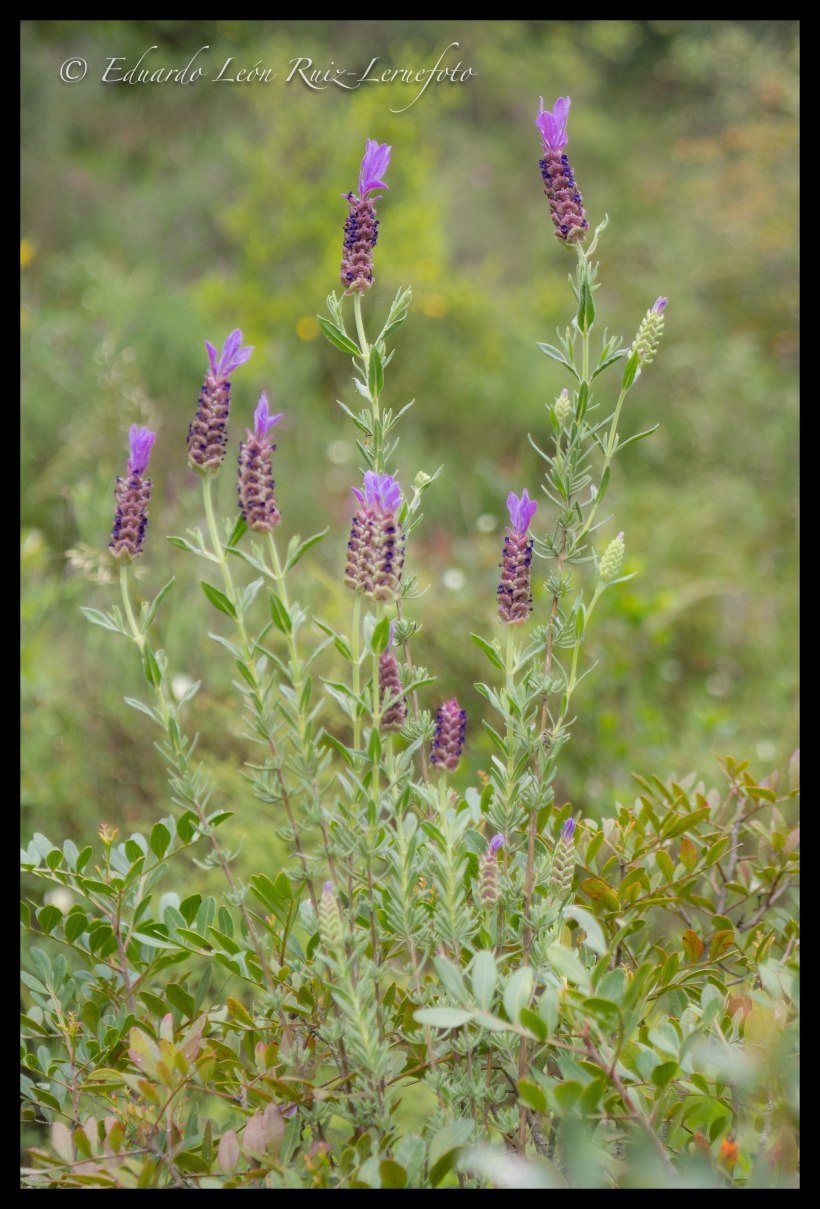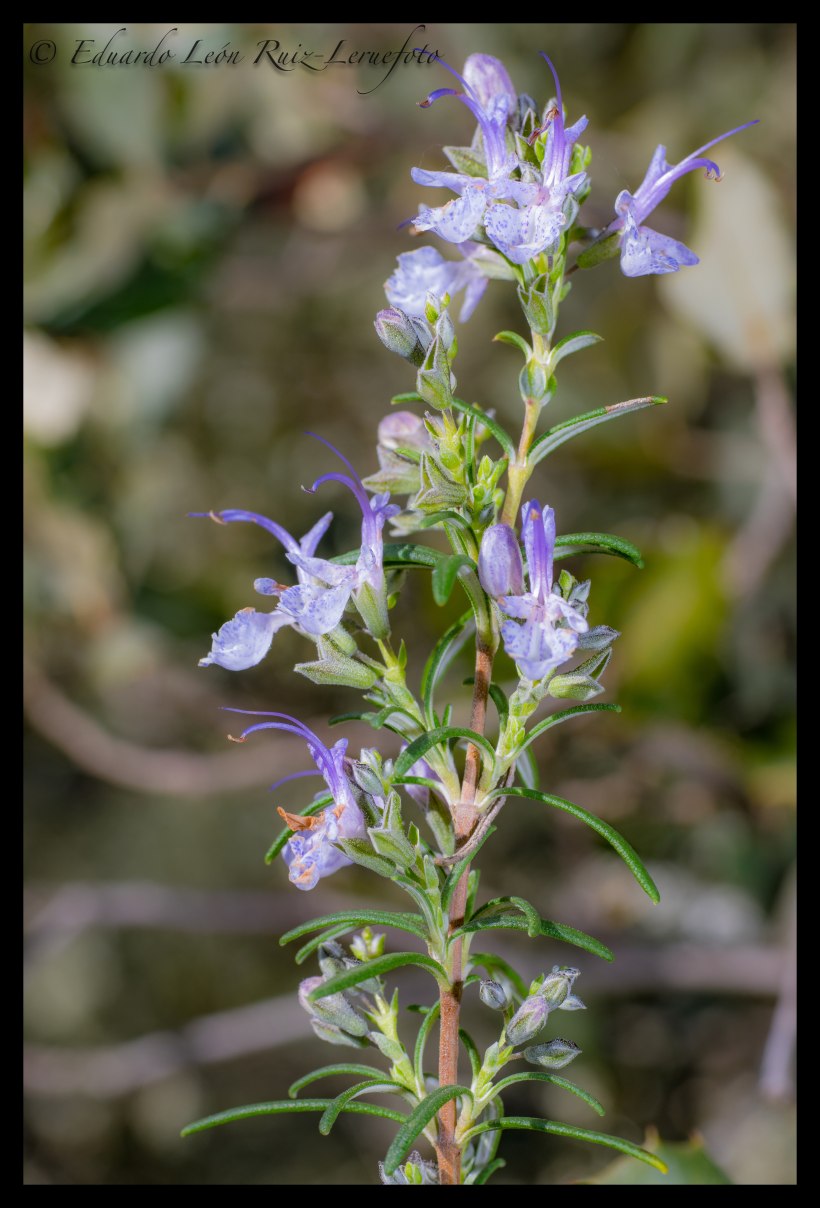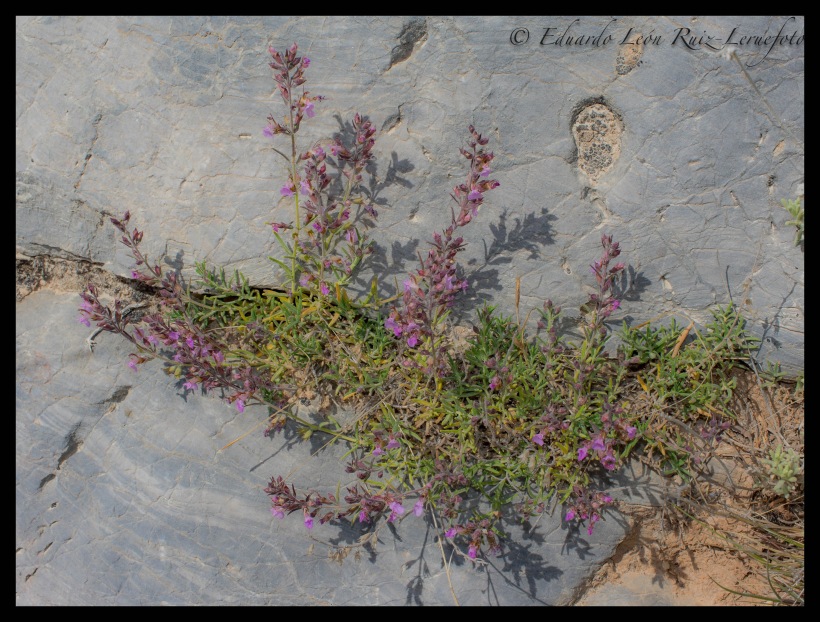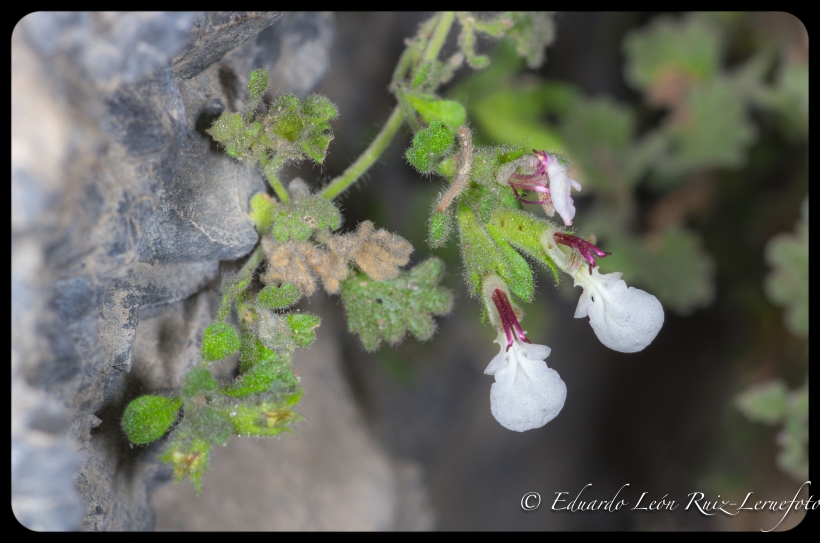This is a small aromatic shrub of up to 150 cm tall, that can be found in dry shrublands along the mediterranean Region. Stems are more or less tomentose. Leaves are more or less lanceolate, entire, spathulate and usually grey-tomentose. Flowers are arranged into pedunculate spikes that bear 3-12, obovate and purple, apical bracts. Fertile bracts are ovate to rhombic and densely pubescent. Calyx is 13 veined with an obcordate appendage at the apex of the upper tooth. Corolla is usually dark purple and scarcely pubescent.
Flowering occurs between January and September.
The photo was taken near the “Arroyo Pedroche” (Córdoba) in April 30, 2018.






















